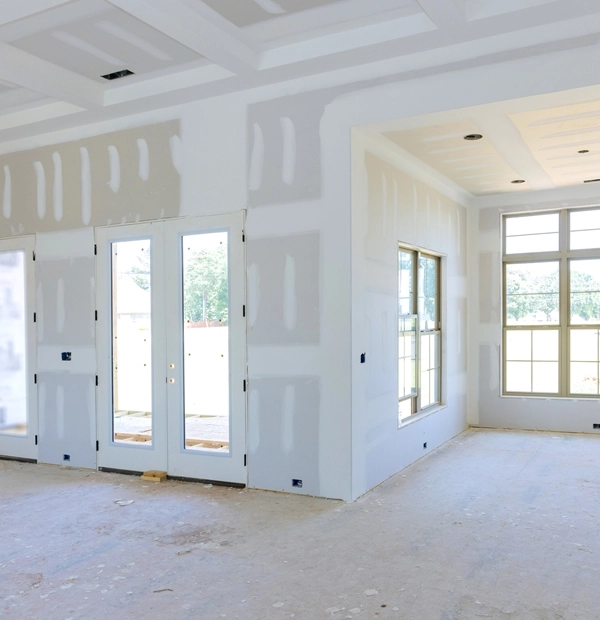Tape & Jointing
What is Tape & Jointing?
What is Tape & Jointing? Taping and jointing is a method that we employ for finishing dry-lined walls, mostly in commercial settings as a quick and effective alternative to plastering.
Most of the time, it’s typically used on new partition walls, where the ‘tape’ will be used to bridge a gap.
Benefits of Tape & Jointing
Tape and jointing provides a number of benefits over other drywall installation and repair methods. It is fast and easy to install, cost-effective, durable, and easier to repair. Additionally, it is versatile and can be used in a variety of applications.
Tape and jointing the tapered edge of plasterboard allows walls, columns, stud walls, etc. to be dry lined without the need to apply a plaster finish.
The slightly tapered edges allow the joint tape to be covered with jointing compound and left flush with the main surface of the plasterboard so we can provide a quick, clean and efficient service with the very best finish ready for decorating and painting.

Types of Tape & Jointing
- Paper Tape & Jointing:
Paper tape and jointing is the most common type of tape and jointing. This method involves using paper tape and joint compound to seal the seams between sheets of drywall. The paper tape is applied to the seams and then the joint compound is spread over the tape. The joint compound is then sanded to create a smooth, even surface - Fibatape & Jointing:
Fibatape and jointing is a variation of paper tape and jointing. This method involves using a fibatape instead of paper tape. The fibatape is applied to the seams and then the joint compound is spread over the tape. The joint compound is then sanded to create a smooth, even surface - Self-Adhesive Tape & Jointing:
Self-adhesive tape and jointing is a variation of paper tape and jointing. This method involves using a self-adhesive tape instead of paper tape. The self-adhesive tape is applied to the seams and then the joint compound is spread over the tape. The joint compound is then sanded to create a smooth, even surface
Advantages of Tape & Jointing
- Cost-Effective:
Tape and jointing is a cost-effective drywall installation and repair method. It is less expensive than other methods and can be completed quickly and easily. Additionally, it does not require specialized tools or materials, making it an ideal solution for those on a budget - Durable:
Tape and jointing is a durable drywall installation and repair method. The joint compound is designed to provide a strong bond between the sheets of drywall, and the tape helps to reinforce the bond. Additionally, the joint compound is sanded to create a smooth, even surface, making it resistant to cracking and other damage - Easier to Repair:
Tape and jointing is also easier to repair than other drywall installation and repair methods. If a section of drywall is damaged, the tape and joint compound can be easily removed and replaced. This makes it ideal for areas that may need to be repaired or replaced in the future - Quicker to Install:
Tape and jointing is also quicker to install than other drywall installation and repair methods. It does not require specialized tools or materials and can be completed in a fraction of the time. This makes it an ideal solution for those who need to complete a drywall project quickly - Versatile:
Tape and jointing is also a versatile drywall installation and repair method. It can be used in a variety of applications, including ceilings, walls, corners, and more. Additionally, it can be used in both residential and commercial projects
Can you tape and joint in the bathroom?
When it comes to taping and jointing in the bathroom, there are a few things to consider. This is because bathrooms are often wet and humid environments, which can cause damage to the tape and jointing materials if not properly protected. It is important to use moisture-resistant taping materials that can withstand high humidity, as well as sealant or grout designed for use in bathrooms.
Additionally, it is important to make sure that all joints are securely sealed and that any gaps between tiles or other surfaces are properly filled. With the right precautions, taping and jointing in the bathroom can be a successful project.
What is feathering?
Feathering involves blending each coat of compound into the plasterboard to make the joint disappear and create a smooth finish.
The jointing compound is moved away from the centre of the joint until it seamlessly merges with the surface of the plasterboard.